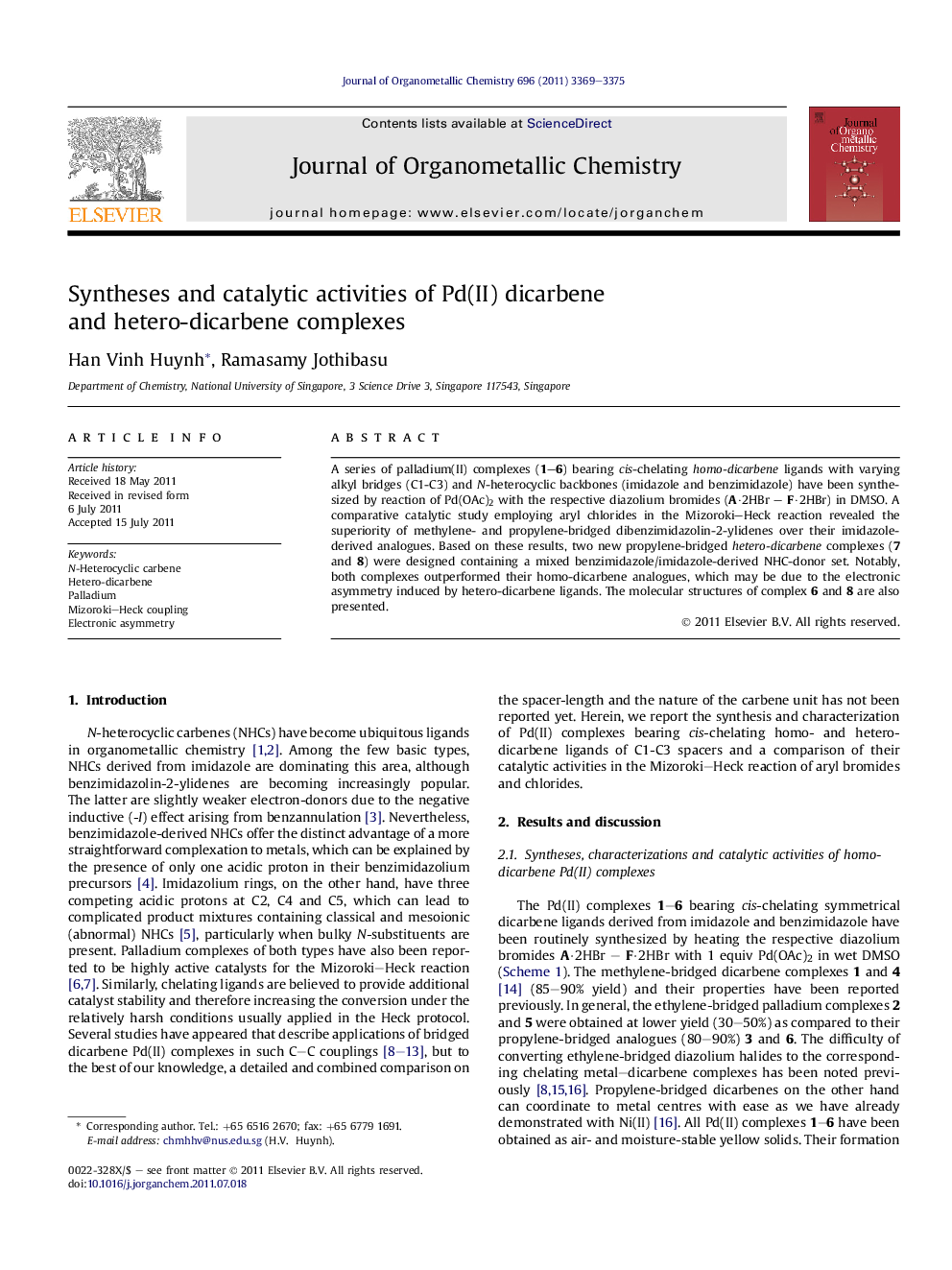| Article ID | Journal | Published Year | Pages | File Type |
|---|---|---|---|---|
| 1323713 | Journal of Organometallic Chemistry | 2011 | 7 Pages |
A series of palladium(II) complexes (1–6) bearing cis-chelating homo-dicarbene ligands with varying alkyl bridges (C1-C3) and N-heterocyclic backbones (imidazole and benzimidazole) have been synthesized by reaction of Pd(OAc)2 with the respective diazolium bromides (A·2HBr – F·2HBr) in DMSO. A comparative catalytic study employing aryl chlorides in the Mizoroki–Heck reaction revealed the superiority of methylene- and propylene-bridged dibenzimidazolin-2-ylidenes over their imidazole-derived analogues. Based on these results, two new propylene-bridged hetero-dicarbene complexes (7 and 8) were designed containing a mixed benzimidazole/imidazole-derived NHC-donor set. Notably, both complexes outperformed their homo-dicarbene analogues, which may be due to the electronic asymmetry induced by hetero-dicarbene ligands. The molecular structures of complex 6 and 8 are also presented.
Graphical abstractNew hetero-dicarbene Pd(II) complexes bearing both benzimidazole and imidazole-derived NHC donors have been synthesized. A comparison of their Heck-type catalytic activities revealed their superiority over homo-dicarbene analogues with either two imidazole- or benzimidazole-derived NHCs. Structural parameters of homo- versus hetero-dicarbene complexes have also been compared.Figure optionsDownload full-size imageDownload as PowerPoint slideHighlights► (Benz)imidazole-derived Pd-diNHC catalysts with C1-C3 bridges were compared. ► Pd-dibenzimidazolin-2-ylidenes are superior over imidazole-analogues. ► First hetero-dicarbene complexes of Pd(II) are reported. ► Hetero-dicarbene complexes are better catalysts than homo-dicarbene analogues.
